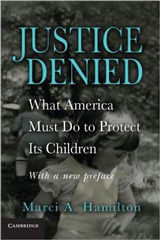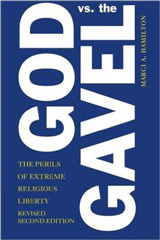Drawing on data from the extraordinary archive of Catholic sex abuse at Bishopaccountability.org, the San Diego Tribune recently published the top 10 sexual abuse settlements by the Catholic Church in the United States. The numbers are large in the aggregate: the church paid $1.553 billion total, with $960.94 million paid to 2,458 survivors. On average, each victim received $391,000 after attorneys’ fees.
These numbers are just the tip of the iceberg as many of the victims did not receive full compensatory damages, because the dioceses pooled claims through bankruptcies or other means and avoid individual trials, thereby lowering per-victim recoveries. The cost to the church is actually higher than $1.5 billion, because it has also had to pay for its lawyers (especially for the bishops who take a scorched earth approach against the victims). They also have covered some therapy. Accordingly, Church costs have been estimated at $4 billion. The victims’ expense has not yet been aggregated by social scientists, but it is certainly well beyond $4 billion given that approximately 20-25% of children are sexually abused and the array of negative effects include addiction, alcoholism, depression, PTSD, and eating disorders, among many others.
These numbers are misleading on the surface, however, because they focus on a truncated stream of funds. Let’s expand the field of examination to understand better the economics of sex abuse. At the first level, for the nearly 2,500 victims from the top ten settlements, cost of the sex abuse was shifted from the victim and onto the institution that created the conditions for the abuse. But it is inaccurate to assume that the victim was in fact bearing the full burden of the cost of the abuse. Families also bear the brunt. As does society, through Medicaid, Medicare, and other forms of medical and welfare assistance. Not to mention the burden imposed on the healthcare system and employers when a survivor needs rehab, time off, or other treatment.
By shifting the cost, these cases reduce fiscal burdens on the system in the future. But they also recoup previous expenses borne by the government. For those who had been treated through Medicaid and Medicare, there is a lien put on such settlements that is collected by the government. To be clear, then, these sex abuse settlements move dollars from the victim, the family, and the taxpayers to the institution at fault. Conversely, without the settlements, we pay and they don’t.
The Cost of Sex Abuse
So far, social scientists have not been able to nail down the cost of sex abuse to society alone and so we are left to draw inferences from other data.
In 2012, leading scholars Richard Gelles and Staci Perlman arrived at a total of approximately $80 billion/year for all child abuse and neglect, including direct costs (“hospitalization, mental health care system, child welfare system services, and law enforcement”) and indirect costs (“special education, juvenile delinquency, mental health and health care, adult criminal justice system, and lost productivity”). Sex abuse is a subset of that number, but also a form of abuse that engenders an array of devastating medical and psychological disorders.
One approach to understanding the cost of abuse to the victim (and society) is by looking at the cost of the diseases that afflict victims, like PTSD, addiction, and alcoholism. For example, child sex abuse victims often receive a diagnosis of PTSD. That is a mental condition primarily studied in the context of combat experience. The first year of treatment for combat-related PTSD was $8,300 as of 2012. That is just one year and while the initial cost may be higher than succeeding years, survivors are often triggered by later events in life that can set them back to the beginning.
Then there is the cost of addiction and alcoholism, also often associated with child sex abuse. Rehab can range from $1,000 to $60,000 and addicts relapse at a rate of 40-60%, creating a multiplier effect on the cost of ending addiction.
These numbers do not take into account the lack of productivity society suffers when these victims often are unable to achieve their full potential, or the cost to society when a survivor struggles with intimacy, which afflicts marriage and increases divorce rates.
Who Pays?
Despite the numbers reported above, the Church and its insurers have paid only a percentage of the actual cost of abuse of its victims nationwide. As a result of the bishops’ lobbying, it has kept the lid on statutes of limitations (SOL) in many states, including states with large Catholic populations like New York, Pennsylvania, and New Jersey. The bishops have routinely refused to pay if the victim was beyond the SOL, or to offer drastically discounted numbers to a victim beyond the SOL. That means that society and families are picking up the slack, and that the burden of sex abuse continues to be borne by the public in this arena and many others.
Shifting the balance of payments only happens when the victims have some legal leverage that forces the institutions responsible to shoulder the cost. Therefore, in states where the SOL is short, like New York, Mississippi, Alabama, Georgia, and Michigan, it is the public bearing the brunt of the abuse.
The bishops often tell legislators that their diocese will go “bankrupt” if they can be sued in a court of law, and lawmakers then shield them by refusing to permit SOL reform to go forward. The calculus by lawmakers to defer to the Church on SOL reform for the purpose of saving the Church money is in fact a decision to let the public pay for the sins of the Church.
Taxpayers save when lawmakers stand up for victims. That means SOL reform should be a state budget priority.










I note that trauma bond is not mentioned.
I suspect that some of these priests may themselves have been molested as children and “learned” to express this type of aberrant behavior.
Some therapists note that child molesters themselves suffered molestation. It’s a generational thing. Therapy becomes necessary for all victims. The molester himself should be perceived a victim as well.
Be well.
Marci, thank you for a well written and factual article. It is tragic that those in positions of authority to take corrective action have FAILED precious children, families and Whistleblowers! The United States of America is the most generous, well-educated and affluent country in the world; yet, where is the federal government now that the truths about the clergy sex abuse crisis are well-documented in civil, criminal and bankruptcy court records? Every aspect of life in the U.S. has suffered because of the sex crimes committed by politically-connected employees of religious institutions.
Most important, where is the Congressional investigation? The truth is: CHILDREN DO NOT VOTE AND DO NOT CONTRIBUTE TO POLICIAL CAMPAIGNS! Shame on those who turned their backs on God’s most precious gift to the world — OUR CHILDREN! If the public didn’t know about clergy sex abuse crimes in the past, everyone should now be fully informed. It is the courage and public outcry of abuse victims and their families that have changed the world — no one else — thank you!
Do the victims of these compensations pay income tax on these settlements? If so then their actual settlement is diminished and the published numbers are misleading. The CDC published a report in 2008, I think it was, that started child abuse for the current generation costs US tax payers $124 Billion. Consider that Sandy Hook, Orlando FL and Virginia Tech were all the product of child abuse. When will President Obama and others stop worrying about gun laws and start concentrating on child abuse which is a world wide pandemic.
Do the victims of these compensations pay income tax on these settlements?
No